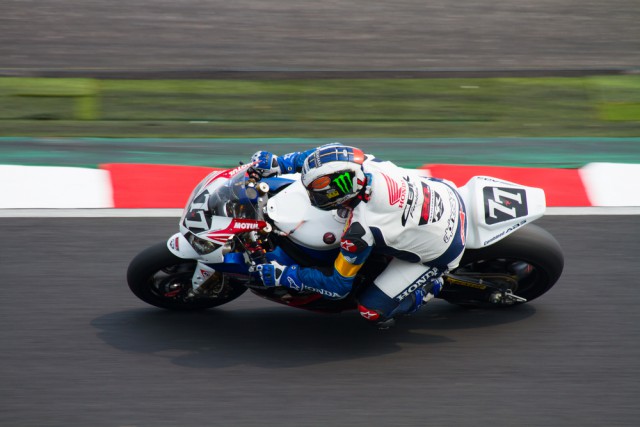
The blurring of technology and sport is something that I have written about several times before and now have another perfect example to add to the list, this time in motorbike racing.
To celebrate the final day of the Isle of Man TT races, EMC Corporation is announcing the results of a data analysis competition designed to reveal exactly what makes one of the riders so fast.
The subject was John McGuinness, also known as The Morecambe Missile. John is a legend in the motorcycle racing world, with a distinguished 25-year history in motorcycle racing and a 23-time winner of the Isle of Man TT races.
It all started at the Circuit Monteblanco in Spain, where EMC used sensors fitted onto the racing suits of John and Adam Child -- a control subject who is a senior road tester with Motor Cycle News -- to capture over 700,000 rows of performance, biometric and mechanical data.
This data was then released to the data science community in the form of an open competition where entrants were tasked with uncovering the most compelling insights.
One of the winners was Stefan Jol, who split up each element of the track for analysis and identified which parts had the greatest impact on overall performance.
The other winner was Charlotte Wickham, assistant Professor of Statistics at Oregon State University, who claimed the visualization prize by tracking each riders’ racing line and displaying this on a map of the track, thus providing a visual representation of each lap.
Mike Foley, Director of data science at EMC said, "Stefan was the only entrant who looked at how performance in one area of the track impacted performance in the other, which was ultimately why we awarded him the first place. We wanted the community to think differently when approaching this challenge to draw out new insights into why John is so fast, and Stefan did just that. Similarly, from a visualization perspective, Charlotte presented the data in an engaging way which made the differences in the riders clear to those outside of the data field".
The findings inspired EMC to repeat the experiment at the Isle of Man TT with a more elaborate array of sensors which will be able to capture significantly more data and more definitively answer the question: What makes John McGuinness so fast?
Ahead of the races this week, John said: "I’ve been racing since I was 18 and I don’t really know why I’m so good at what I do. I thought it was interesting to see just how both the speed and positioning in the corners made the difference, from the test in Spain. I’m really looking forward to what can come out of the data from the TT and hope that some of information can be used to help make me an even better rider and the sport safer in the future".
Jonathan Martin, CMO of EMC said: "We were really excited to see how big data can provide revealing new insights about someone like John McGuinness, and have been thrilled with the interest shown in this project from the data science and motorcycling communities around the world. A project like this has never been undertaken before, and is already proving some interesting and significant observations. We are gaining a better understanding of what makes extreme athletes like John perform at such a superior level, but also through big data analytics we are gaining deep insights into how we can make the sport of motorcycle racing safer.
"We’re looking forward sharing this story with the world in the second half of 2015 through our documentary The Math Behind The Morecambe Missile which chronicles our journey with John and team", adds Martin.
This kind of research obviously has huge potential benefits for riders and their teams and might be worth considering for some of John’s competitors, seeing as The Morecambe Missile won this years race by 14 seconds, securing a new lap record in the process.
The project has also been documented in a film, the trailer of which can be found here.
Published under license from ITProPortal.com, a Net Communities Ltd Publication. All rights reserved.
Photo Credit: kqlsm/Shutterstock

